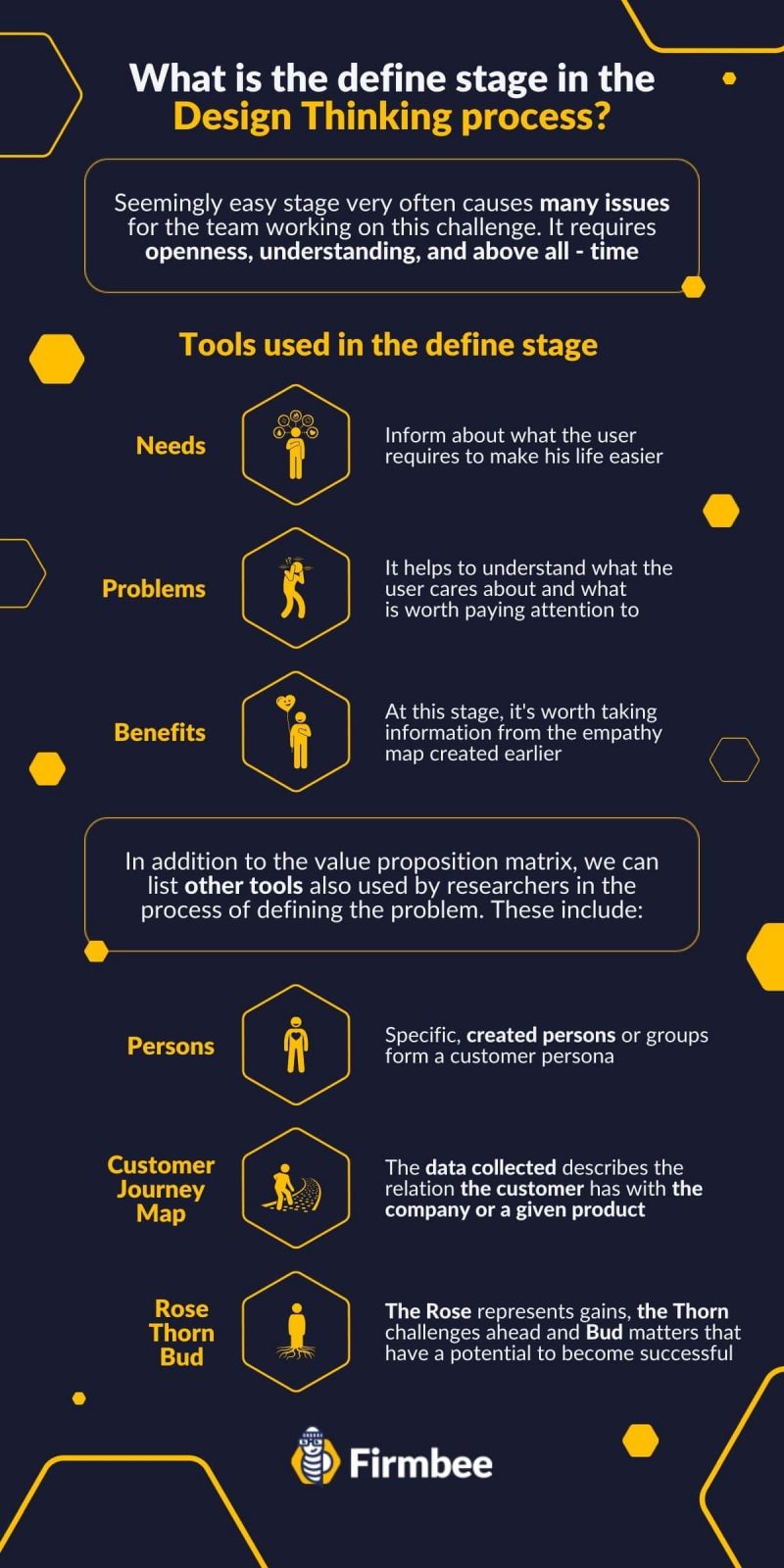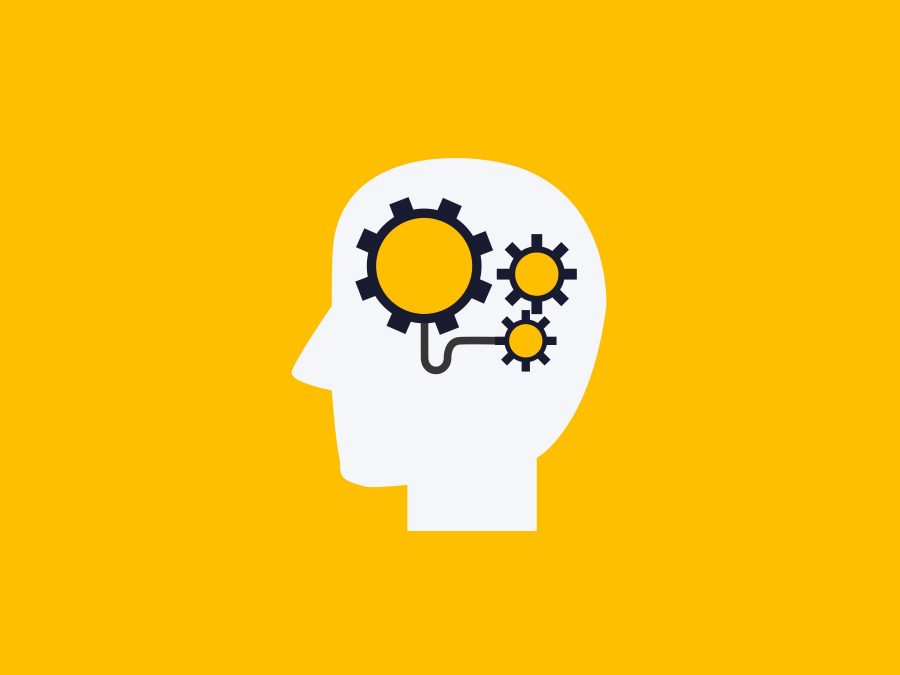Surely each of us has wondered at least once whether a problem is worthy of attention, or whether it has a reasonable solution. We encounter hurdles every day, from the trivial to the more serious. From time to time, ask others for their opinion and you’ll find a lot of advice and insight that will broaden your perspective. The secret to figuring a way out lies in the approach we take. Let us examine some of the most common ones.
The define stage in Desig Thinking – table of content:
- Design Thinking as a humanistic approach
- What is the define stage in the Design Thinking process?
- Tools used in the define stage
Design Thinking as a humanistic approach
In the first part of the article: Design Thinking Methodology Step by Step – Empathizing, we introduced and examined the process of design thinking. Let’s move and describe in a nutshell what is the humanistic approach now.
The humanistic approach is a school of thought that focuses on human beings, their bodies, feeling and relationship with others. Its principles include a holistic, positive and natural scope in studying our physical and mental states, actions and connections. As with human reflexes, when faced with any concern, we are essentially tugged by our feelings. When helping someone other than ourselves, we are forced to empathize with the difficulty that person is facing. In other words, if we want to relate well to the problem, we should arouse empathy in ourselves. It is responsible for us being able to put ourselves “in someone else’s shoes”.
What is the define stage in the Design Thinking process?
The first stage of design thinking is empathizing. This is where it all begins. After thorough research in the empathy, phase comes time to define the problem. Seemingly easy stage very often causes many issues for the team working on this challenge. It requires openness, understanding, and above all – time. Drawing conclusions or potential problems too early narrow our field of vision, making the process less effective.
The first step is to systematize the information gathered, refine the empathy map, and create appropriate personas. It is important that when creating personas, they reflect the group of people we interviewed or observed.
When everything is put in the right place, it is significant to make sure that the collected information is divided into appropriate categories: user needs, issues, and benefits. That is, into what is called a Value Ratio Matrix. If this stage is poorly done, further work will be hindered as researchers narrow their search area.

Tools used in the define stage
The tool that will greatly help to understand the user and his expectations is precisely the value proposition matrix. All collected information should be placed according to the definitions on the matrix (difficulties, benefits, needs). It is worth understanding the definitions of these areas to fit them all properly.
- Needs – inform about what the user requires to make his life easier and why he reached for a given product.
- Problems – these are situations that the consumer has to face every day, and they are unpleasant or hard to deal with. It helps to understand what the user cares about and what is worth paying attention to.
- Benefits – that is what makes the recipient happy and satisfied. At this stage, it’s worth taking information from the empathy map created earlier.
In addition to the value proposition matrix, we can list other tools also used by researchers in the process of defining the problem. These include:
- Persons – which have already been mentioned earlier. Specific, created persons or groups form a customer persona. When creating personas, it is necessary to take into account the description of a given person, give his/her age, profession, interests, needs, pains, and also briefly describe the bio-biography, so that the researcher could better imagine the created character.
- Customer Journey Map – literally, it concerns mapping the customer. Additionally, the data collected describes the relation the customer has with the company or a given product and presents his/her previous experiences connected with it.
- Rose Thorn Bud– when creating a product, this technique focuses on grouping potential into categories that correspond to the parts of the flower. Hence, the Rose represents gains,) the Thorn challenges ahead and Bud matters that have a potential to become successful.
Of course, there are many tools we can use for the problem define stage. We can use the 5WHY method and focus on “why?” to bring the question to the heart of the matter. Mapping the issue is also popular, whether it’s creating a journey map as mentioned earlier, stakeholder maps, mind maps, empathy maps – any of these can help bring us closer to the essence and further solution of the concern. There is no single, fixed rule that would define how to approach this stage. However, we shouldn’t underestimate nor skip the whole process of design thinking as it can undermine the good prospects of our enterprise.
If you like our content, join our busy bees community on Facebook and Twitter.
Author: Zofia Lipska
With over 10 years of experience in digital marketing, Sophia not only knows the rules of this industry but above all knows how to break them in order to achieve outstanding and creative results.


















